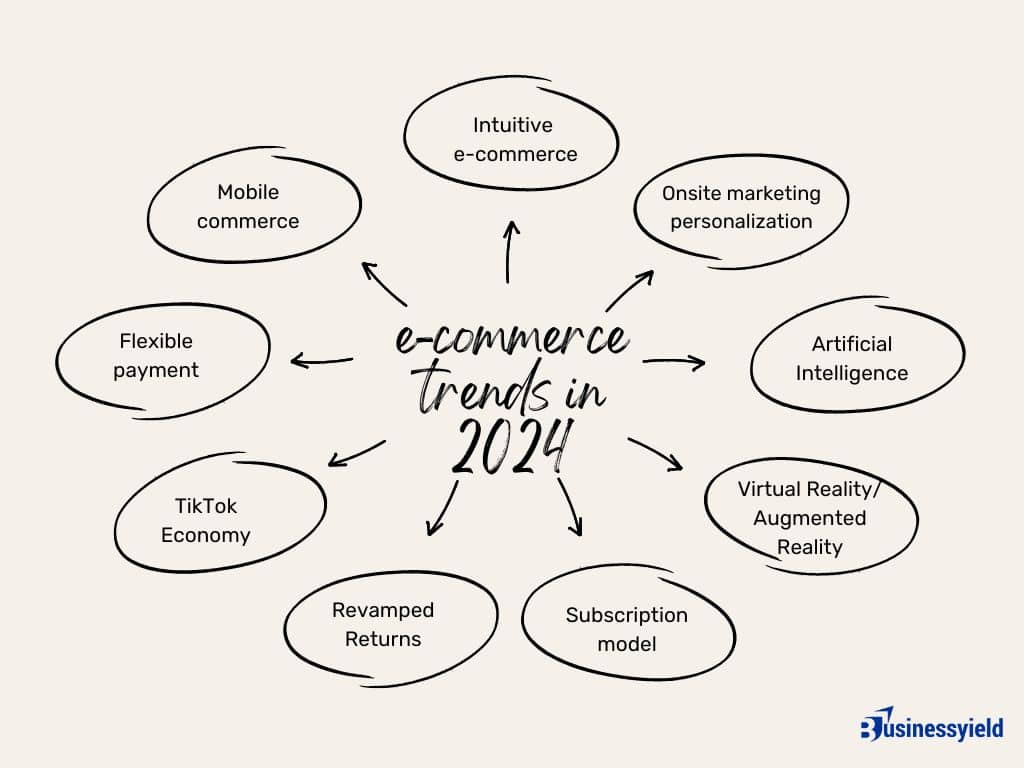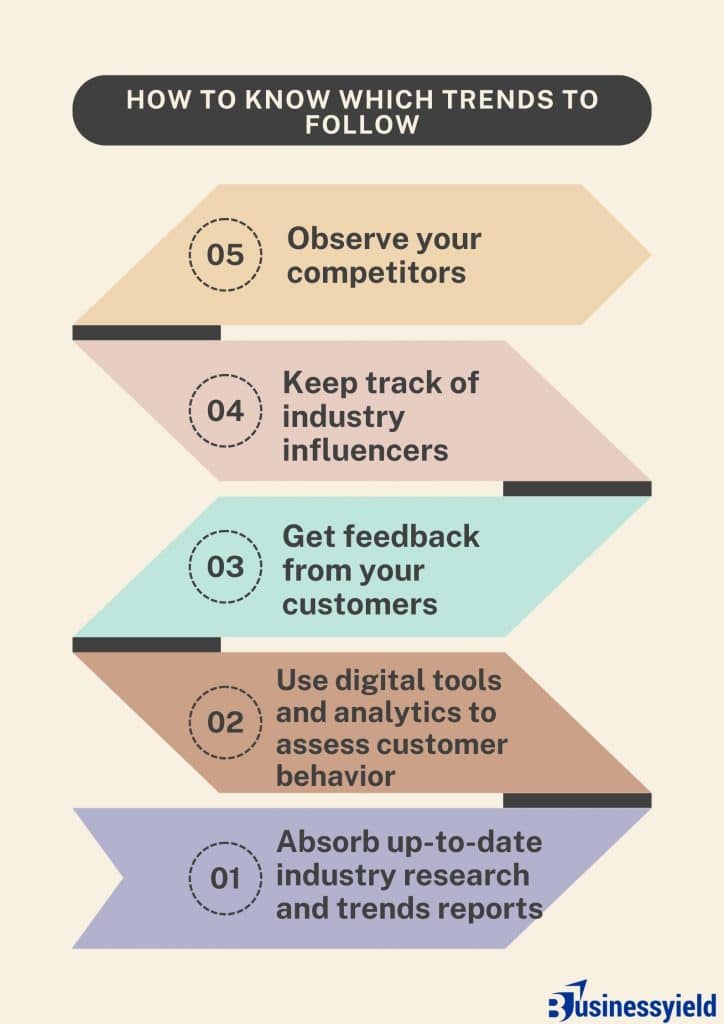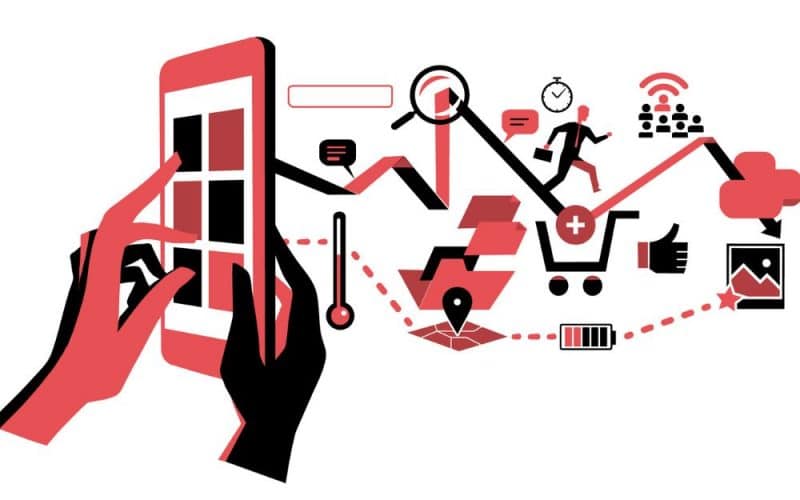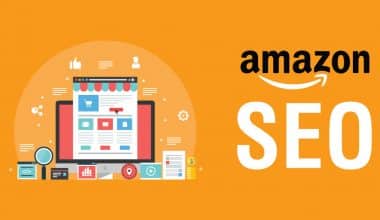The e-commerce industry is always changing and evolving with trends, and this year has been no different. This is necessary, as out of the 8 billion people in the world today, 64% use the internet, double the rate from a decade ago. Internet access has disrupted consumer life, including how they shop.
This has made it more important than ever for merchants to create and/or improve their e-commerce businesses to meet customers where they are. As technology keeps evolving, new trends such as the use of AI and the growth of social media marketing become almost indispensable for online businesses. However, how can you know which trend is right for you?
And how could those e-commerce trends benefit your business?
Those are the questions I will answer in this guide. I will summarise the latest and greatest trends from the global e-commerce industry so you never miss out on any new developments in the industry.
Key Points
- E-commerce refers to the buying and selling of goods and services over the Internet.
- E-commerce has also profoundly changed the shopping experience for consumers worldwide.
- As technology keeps evolving, new trends are becoming almost indispensable for online businesses.
- Knowing what trends will be a good fit for you will often come down to knowing your own customers and competitors.
What is e-commerce?
E-commerce refers to the buying and selling of goods and services over the Internet. This type of commerce came into popular use in the late 1990s with the rise of Amazon and has grown exponentially in recent years, as more people use the internet to purchase items.
The prominence of e-commerce is demonstrated by the fact that people now mention Cyber Monday in the same breath as Black Friday during the holiday shopping season.
E-commerce’s ascension is due in part to the increase of convenience and product choice it offers online shoppers, as well as the way it allows new retail businesses to thrive without having to operate a physical storefront.
The rise of the e-commerce industry has led to the creation of new online brands, new marketplaces that facilitate transactions between buyers and sellers, new sources of revenue for publishers and social media platforms, and a new burgeoning sector of vendors that service e-commerce businesses.
E-commerce has also profoundly changed the shopping experience for consumers worldwide. People can buy products from home with one click — or a voice command — and have it delivered to their doorstep within hours. About one-fifth of all retail purchases are made online, which amounts to more than $1 trillion in online retail sales. By 2026, that number is forecast to grow to about 25%.
For some perspective, consider that in 2004, e-commerce sales only made up 2% of purchases in the United States.
In trying to keep up with advancements in internet technology and the fast-changing habits of consumers, e-commerce has had to be a constantly evolving industry.
Types of e-commerce
The e-commerce industry is made of smaller subcategories that are determined by the goods and products that each digital store sells. Some e-commerce sites sell directly to consumers. Others sell to other businesses. Some sell physical products and others just sell digital services. Below are a few of the main popular forms of e-commerce:
Business to Consumer (B2C)
The most common type of e-commerce is business-to-consumer. This is when retailers sell their products or services to shoppers through their own website or an online platform.
Business to Business (B2B)
In B2B e-commerce, businesses sell products or services to other businesses online.
Consumer to Consumer (C2C)
In C2C e-commerce, consumers sell products or services to other consumers through an online platform, such as eBay, Craigslist, Etsy, or Poshmark.
Consumer to Business (C2B)
Consumer-to-business e-commerce is a model in which consumers create or provide value to businesses. Some examples include a photographer licensing their work, a freelancer offering contract work via a gig platform, or a tech device blogger including affiliate links in their articles.
Prominent e-commerce trends in 2024

Intuitive e-commerce
The rising influence of digital channels among consumers has made it compulsory for companies to improve their online experience. This is possible due to evolving data-gathering strategies and emerging technologies from AR to IoT to generative AI. These advances have transformed the online shopping experience, leading to one that is more intuitive.
READ: BEST ONLINE SHOPPING: Top Site/Apps for Women, Clothes & Groceries
Consumers have greater expectations. About half of digital consumers want one-of-a-kind offerings. A fifth wish for more personalized shopping experiences. In both cases, these sentiments are higher among the most digitally savvy population, according to Euromonitor’s consumer research. That is telling as this shift towards a more intuitive experience plays out on digital channels where these consumers shop more frequently.
In part, this means ensuring the online channel is more akin to what a consumer might experience in person. While a variety of data and tech are used, generative AI is taking on a central role in shaping the online experience. E-commerce companies leverage generative AI in a variety of ways, from improving customer service to tailoring marketing messages to optimizing supply chains. Virtual assistants powered by generative AI also create a more intuitive experience by using additional information sources for added context.
Onsite marketing personalization is a top priority
With ad costs skyrocketing, e-commerce businesses will need to make sure they have the best chance to convert their existing traffic. Onsite (“on a website”) personalization is one of the best ways to achieve that—it’s a strategy of creating relevant experiences for online shoppers based on data and targeting.
READ: TARGETING IN MARKETING: Definition, Importance, Strategy & How to Use It
Onsite personalization includes:
- Dynamic content on web pages (any content that changes based on signals like browsing data)
- Product recommendations and upsell based on the visitors’ browsing and purchasing history
- Personalized marketing offers (discounts and special deals) for every customer or customer group
Clearly, data such as buying history, browsing history, website behavior, and traffic source will become essential for creating personalized marketing campaigns:
| Traffic source | Browsing behavior and properties | Shopping-related behavior |
|---|---|---|
| New visitors | Views X pages on your website | Reaches a certain cost of all the products added to cart |
| Returning visitors | Clicks on a page element (button, image, etc.) | Buys X times from your store |
| Paid visitors (from paid ads) | Adds a product to the shopping cart | Adds X items to the shopping cart |
| Organic visitors (from Google) | Is from a certain country or city | Subscribes to the newsletter but does not buy |
| Has a certain device (desktop or mobile) |
E-commerce popups are perfect for sharing personalized offers based on this data thanks to built-in audience targeting in popup apps, and the same could be said about page targeting options.
AI helps shops learn about shoppers
Artificial Intelligence (AI) and machine learning make it possible for the customer to have automated, personalized shopping experiences. AI is continuously collecting data on how a customer shops, when they shop, and what they’re looking for in a product or a service. It’s a piece of technology that really can’t be replicated in-store.
READ: Artificial Intelligence: The Future of Data Security Solutions
Ron Smith, Editor in Chief, The Digital Outdoor, emphasizes how the complexity of AI and the ability to make it more human is also increasingly important:
“People want to know that brands care about them, and AI will be programmed accordingly. We have currently seen the opposite behavior on social media, where AIs learn from humans’ more negative remarks, but it’s highly likely that consumers will crave the impact. If bots can learn how to form sentences to convey an emotion, companies can soon teach them to offer comfort and products based on customers’ moods.”
On-site personalization uses those insights to create individualized experiences
Buyers of all sorts — including B2C and B2B — are looking for personalized, custom shopping experiences online. The data collected from AI is what makes it possible for a buyer to get personalized product recommendations and detailed customer service.
SEE: What Is Product Development? An Expert’s Guide For Product Developers and Managers
Implementing personalized experiences on-site or in marketing efforts has been shown to have a strong effect on revenue. A study found that this had a 25% revenue lift for retailers scaling advanced personalization capabilities.
For further context, this accounted for 19% of participating companies while retailers that were “building basic personalization capabilities” achieved “a revenue lift of 10% or more; the retailers in this tier account for 40% of the participating companies.
The subscription model remains a reliable way to boost retention
Adopting the subscription model in your business involves several strategic steps to ensure a successful transition and implementation. Here’s a detailed guide on how to adopt the subscription model:
How to effectively adopt the subscription model
MeUndies, one of the fastest-growing online apparel brands, has sold 17 million pairs of underwear since 2011, relying only on its cash flow and credit facility to stay afloat. In 2020, the brand finally reached $100K in profit, although it initially took them five years to see the first surplus.
How did they stay afloat?
MeUndies follows a direct-to-customer (DTC) subscription model that works like this: A customer subscribes to a monthly or quarterly membership and gets new pairs of underwear. Also, since the brand started selling its products without a subscription, those who are members can buy their items for a cheaper price.
High retention rates is why the subscription model remains prevalent in e-commerce. Think about it—a subscription is a kind of commitment that a customer can only make if they are fully satisfied with a product and want more of it without having to shop for it again.
READ: SUBSCRIPTION BUSINESS MODEL: How It Works
Besides, the available data says it all. Take a look at these retention rates from 2020 sourced by product category.
All of them are either over an average e-commerce retention rate (28.2%) or only 1% below it.
READ: Enhancing Customer Loyalty: 8 Retention Strategies
So, we can safely assume that subscriptions will remain among e-commerce retail trends, given the data and the fact that retaining a customer is much cheaper than getting a new one.
Revamped Returns
Consumers have long wanted hassle-free returns but delivering on that expectation has not been without challenges. The convergence of trends like the rise of e-commerce, closure of stores by some retail chains, and boost in sustainable strategies is moving returns up the industry agenda. New technologies and partnerships are paving the way to a happier return experience for shoppers.
Creating a hassle-free return experience is not without challenges. First, what is deemed hassle-free varies by consumers. Although 43% of digital consumers point to mail as the preferred channel for online purchase returns, preferences vary by generation. For example, baby boomers prefer to return by mail, while Gen Z prefers to return in-store.
To solve the unhappy return experience, the industry needs to shift its mindset: it needs to view this as being about improving loyalty, rather than a revenue drain.
SEE: Ways To Stop Revenue Leakage In Manufacturing
Retailers are deploying a variety of tactics to reduce returns or at least their impact on the bottom line. Electronics specialists Best Buy is opening 10 smaller outlets, specializing in selling used and refurbished electronics. These stores aim to target budget-conscious shoppers and recoup more from open-box and return products. More and more retailers are outsourcing the return experience to companies like Happy Returns or Loop Returns, which provide merchants with a customizable online portal for returns and exchanges.
To date, many retailers have struggled to grasp the pivotal role returns play in shaping customer loyalty and as such have sidelined this moment. That’s changing. Two-thirds of retail professionals said they plan to continue or even accelerate investment in product returns, according to Euromonitor’s Voice of the Industry: Retail Survey.
Augmented Reality and Virtual Reality
Another trend that has been improved over the past years and has yet to reach its full potential is the use of Augmented Reality (AR) and Virtual Reality (VR).
In short, AR stands for interactive computer-generated content that enhances the real world through devices (e.g. mobile game Pokemon Go). In contrast, VR happens completely in a fictional reality and requires the use of a headset device to experience it (e.g. in expositions, video).
V-Commerce, which allows businesses to sell their products in a virtual space by combining AR, VR, and Artificial Intelligence, offers an interactive experience to customers who want to visualize and customize products in their own spaces or bodies without going to a physical store. This can improve the overall customer experience and prevent clients from returning products, as they will have a better sense of how appropriate the product might be for them.
If you incorporate v-commerce into your e-commerce, you will see how your online sales will increase and you will stand out from the competition.
SEE: What the Challenger Sales Model Is and How to Use It for Better Outcome
TikTok Economy
Digital consumers are flocking to TikTok and its Chinese sister platform Douyin. Brands are striving to promote their products and services on these platforms known for their short-form video content. This means that some of the viral trends that are doing the most to boost brand sales are emerging organically from users on those platforms.
These ByteDance platforms are not only some of the most popular but also the fastest growing. As of 2023, 43% of digital consumers globally report using them monthly, a 19-percentage-point jump in three years, according to Euromonitor’s Voice of the Consumer: Digital Survey. These short-form video platforms, also known for their endless scroll and advanced algorithms, are a hit with young consumers, especially Gen Z.
Although most marketing campaigns on TikTok are financed or initiated by brands, some of the most viral content is organic. In 2023, an Israeli TikTok influencer posted a video of herself wrapping a frozen Betty Crocker Fruit Roll-Up processed snack around ice cream to create a crunchy fruit-flavored ice cream cone. Almost overnight, Fruit Roll-Outs began flying off-shelf, creating a black market.
SEE: VIRAL MARKETING: Definition and 10 Best Examples of Viral Marketing Campaigns
ByteDance platforms are dabbling in retail. In 2020, Douyin pivoted from being a pure social media platform to a retailer, prioritizing smaller sellers with a low-fee structure with revenue supplemented by advertising. Douyin has seen massive e-commerce gains. Online sales of beauty and personal care products on Douyin’s marketplace surged 81% in the nine months of 2023, as compared with the same period in 2022, according to Euromonitor’s new e-commerce research.
As for TikTok, its TikTok Shop is finding success in Southeast Asia and opened shop in the US and UK in September 2023.
Flexible payments
Another aspect to consider when addressing buyers during the current recession is offering flexible payment options, like Buy Now Pay Later (BNPL) methods.
As the name suggests it allows users to buy products and pay for them in installments over time, which appeals directly to those who want to manage their finances effectively and even purchase larger items without the need for credit. Preferably consumers use options like Klarna or Afterpay which do not require interest fees, so consider this before choosing a BNPL service.
SEE: WHAT IS FSA?: Flexible Spending Account Explained!
Businesses can see how their revenue starts growing after implementing BNPL options as a new e-commerce payment method since they can attract new customers and increase the spending of previous clients.
Between 2021 and 2026, global BNPL transactions are expected to reach over 450 billion USD accounting for further growth of the global market.
Mobile commerce
Last but not least, Mobile Commerce or M-Commerce is one of the trends in e-commerce that is definitely here to stay. In countries like the UK, France, and Italy mobile commerce represents around half of all online retail shares, whereas in South Korea it is situated around 72%.
Therefore, if you want your company to succeed in e-commerce, you should invest in social media channels like TikTok, predominantly popular amongst Gen Z. Develop mobile apps with regular push notifications, invest in mobile optimization for their websites, and even experiment with live shopping.
How to know which trends to follow
Not every trend is worth jumping on, but which one deserves your time and effort? While some will provide a huge value-add, others might be out of touch with your particular audience or might be too costly to implement for your business to maintain a reasonable ROI.
Knowing what trends will be a good fit for you will often come down to knowing your own customers, vertical, and competitors backward and forwards. There are several things you can do to evaluate industry trends and make the right move for your B2B. These include:

Absorb up-to-date industry research and trends reports
Every industry changes at some point or another, and staying up to date via reports and data can show you where things are headed. The numbers in these reports often come from original research you can trust, instead of just following the popular word-on-the-street. Plus, when you’re regularly aware of what’s happening in your industry, you’ll grow a sense of what trends are worth the effort and what ones can wait.
Use digital tools and analytics to assess your customers’ behavior
Use customer data to evaluate if a trend is right for you. What do the numbers show? Many trends might work for other businesses, but you know your customers best. Consider utilizing more than one data-gathering tool so you can see customer trends from different sources. Use these numbers to see the overall trends in your business. Would adopting a new trend interrupt your customer behavior?
SEE: What Is Behavioral Segmentation in Marketing? Types, Examples & Variables
Get feedback from your customers
Don’t be afraid to ask current customers what they need. Getting feedback from current customers can give you insight into trends, and you can create more specific plans for the future. You never know, a customer might even suggest an idea you hadn’t thought of yet.
Keep track of industry influencers and publications
Follow blogs and related news in the industry so you can stay on top of what’s happening. Start by finding influencers and publications related to your industry specifically, and then branch out into other markets to get the whole picture.
Observe your competitors
Take a look at your competitors. Did they jump on a specific trend? If so, how did it work for them? Of course, you don’t have to do everything your competition is doing, but being aware is another way to measure a trend.







